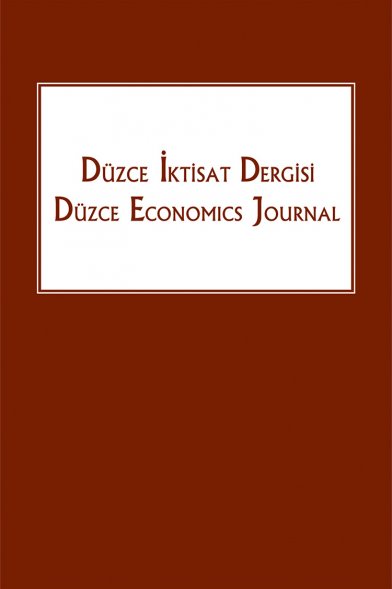Kripto Paraların Dünya Genelindeki Hukuki Durumuna İlişkin Bir İnceleme
Kripto Para, Bitcoin, Ethereum, Merkez Bankası Dijital Parası.
A Review of the Legal Status of Cryptocurrencies
Cryptocurrency, Bitcoin, Ethereum, Central Bank Digital Currency.,
___
Akdağ, M. (2019). Kripto Paralizasyon ve Türkiye Ekonomisi için Bir Uygulama (Basılmış Doktora
Tezi), Atatürk Üniversitesi.
Alnıaçık, B. (2019). An Analysis of Current Status of Crypto Currencies Over the World and
Turkey, Research Studies Anatolia Journal, (2), 21–30.
Arıkan, N.İ. (2020). An Overview of the Cryptocurrencies: The Theory of Money Perspective, Malatya Turgut Ozal University Journal of Business and Administrative Sciences, 1(2), 147-165.
Arıkan. N.İ. (2021a). Digital Currencies: Some Theorical and Practical Implications. Ö. Kaya (Ed.), Research and Evaluations in Social, Administrative and Educational Sciences (323-363) içinde.
Ankara: ISPEC.
Arıkan, N.İ. (2021b). Identification of the Variables Effecting the Value of the Cryptocurrency, The
Journal of International Scientific Researches, 6(1), 27-34.
Baek, C., & Elbeck, M. (2015). “Bitcoins as an Investment or Speculative Vehicle? A First Look”.
Applied Economics Letters, 22(1), 30-34.
Banque de France. (2017). Bitcoin <https://www.banquefrance.fr/sites/default/files/medias/documents/declaration_francois_villeroy_de_galhau_ -
_bitcoin_-_01122017.pdf > (16.01. 2020).
BDDK, Bitcoin Hakkında Basın Açıklaması, (25.11.2013), 2013/32.
BIS (2018). Central Bank Digital Currencies. BIS Quarterly Rewiev, March.
Bech, M. L., & Garratt, R. (2017). “Central Bank Cryptocurrencies”. BIS Quarterly Review, September, 55-
70.
BOE. (2020). Central Bank Digital Currency: Opportunities, Challenges and Design. Bank Of
England.
Can, M., Khalilov, K., Gündebahar, M., & Kurtulmuşlar, İ. (2016). Bitcoin ile Dünya ve Türkiye’deki
Dijital Para Çalışmaları Üzerine Bir İnceleme. 19. Akademik Bilişim Konferansı-AB 2017
Aksaray Üniversitesi.
Christopher, N. (2018). “RBI Panel to Study Feasibility of Digital Currency”.
<https://economictimes.indiatimes.com/news/economy/policy/rbi-panel-to-studyfeasibility-of-digital-currency/articleshow/65601646.cms> (04.01.2020)
Corbet, S., Lucey, B., Urquhart, A., Yarovaya, L. (2019). “Cryptocurrencies as a financial asset: A
systematic analysis”. International Review of Financial Analysis, 62, 182- 199.
CPMI (2018). Central Bank Digital Currencies. Bank for International Settlements (BIS).
Cuthberson, A., “İsviçre Devlet Başkanı: Facebook’un kripto parası çuvalladı “, Idependent, 31.12.2019.
Dyhrberg, A. H. (2016). Bitcoin, Gold and the Dollar – “A GARCH Volatility Analysis”. Finance Research
Letters, 16, 85-92
ECB. (2012). Virtual Currency Schemes. Frankfurt am Main: Europe Central Bank.
ECB. (2015). Virtual Currency Schemes – A Further Analysis. Frankfurt am Main: Europe Central Bank.
ECB. (2018). Securities Settlement Systems: Delivery-Versus-Payment in a Distributed Ledger Environment.
Europe Central Bank.
Garratt, R., & Wallace, N. (2018). “Bitcoin 1, Bitcoin 2,.: An Experiment in Privately Issued Outside
Monies”. Economic Inquiry, 56(3), 1887-1897.
Jackson, O. (2018). “US or Swiss Approach for EU Crypto Regulation?”. International
Financial Law Review, Feb 22.
Koning, J. (2016). Fedcoin: A Central Bank-Issued Cryptocurrency. R3 Reports.
<http://www.r3.com/wp-content/uploads/2018/04/Fedcoin_Central_Bank_R3.pdf> (02.02.2020)
Kumhof, M., & Noone, C. (2018). “Central Bank Digital Currencies-Design Principles and Balance
Sheet Implications”. Bank of England Staff Working Paper, 725. (03.04.2020).
MAS. (2019). Project Ubin: Central Bank Digital Money Using Distributed Ledger Technology.
Monetary Authotarity of Singapore.
Öztürk,A. A., "Blokzincir (Blockchain) Teknolojisi ve Kripto Paraların Finans Sektörüne Etkisi ile
Ülkemizdeki ve Uluslararası Alandaki Önemli Yasal Düzenlemeler", Finans Hukuku Gündemi
Dergisi, 2019,(2).
Schweigl, J. (2018). “Central Bank Digital Currency–the Latest Challenge for the Theory of Monetary
Law”. In Optimization of Organization and Legal Solutions concerning Public Revenues and
Expenditures in Public Interest (Conference Proceedings), 385-390.
Resmî Gazete, On Birinci Kalkınma Planı, 23.07.2019.
Reuters. (2018). Switzerland Seeks Study of State-Backed E-Franc Cryptocurrency. (10.02.2020).
Şahin, E. (2018). "Crypto Money Bitcoin: Price Estimation with ARIMA and Artificial Neural
Networks”. Fiscaoeconomia , 2 (2) , 74-92.
Yılmaz, G. Ve Koç, T.S. (2019), “Kripto Para Alım Satımı ve Madenciliği Faaliyetlerinin
Vergilendirilmesi Üzerine Bir Tespit ve Öneri,” Vergi Sorunları Dergisi, Sayı 364, Ocak 2019,
ISSN 1300-8951, 23-42.
- ISSN: 2757-6558
- Yayın Aralığı: Yılda 2 Sayı
- Başlangıç: 2020
- Yayıncı: Şerif CANBAY
Hisse Senedi Fiyatlarının Ortalamaya Dönüşü: Kesirli Frekanslı Fourier ADF Birim Kök Testi
Türkiye İçin Cari İşlemler Dengesi Beklentilerinin Rasyonalitesi Üzerine Ekonometrik Bir Analiz
Kripto Paraların Dünya Genelindeki Hukuki Durumuna İlişkin Bir İnceleme
Türkiye'de Askeri Harcama Yakınsaması: Fourier Birim Kök Testinden Kanıtlar
